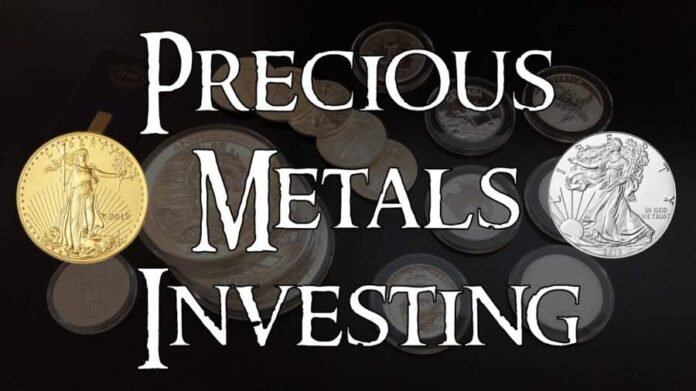Are you considering investing in precious metals? It can be a valuable addition to your investment portfolio, offering benefits such as inflationary protection, low correlation to other asset classes, and intrinsic value. However, before you jump in, it’s important to know your goals and risk profile.
In this article, we’ll explore tips for investing in precious metals successfully, from understanding the different types of metals available to accessing them through various investment vehicles and the factors affecting their prices. But you can also visit any precious metals and gold IRA website for more information.
First and foremost, diversification and portfolio allocation are key to successful precious metal investing. It’s important to have a diversified portfolio that includes a mix of asset classes, including precious metals. This can help reduce risk and provide the potential for higher returns over the long term.
When allocating your portfolio, consider your risk tolerance and investment goals. Are you looking for a hedge against inflation or a long-term investment? Understanding your goals can help guide your portfolio allocation and precious metal investment decisions.
Diversification and Portfolio Allocation
If you want to diversify your portfolio and protect against market volatility, consider allocating a small percentage to precious metals like gold and silver. Precious metals have a low or negative correlation to other asset classes like stocks and bonds, making them an excellent hedge against market fluctuations and economic uncertainty. Gold and silver also have intrinsic value and carry no credit risk, making them a safe haven for investors during times of crisis.
When deciding on your portfolio allocation, it’s essential to consider your risk tolerance and investment goals. A small allocation of 5-10% to precious metals is appropriate for many people, but it ultimately depends on your individual circumstances. Precious metals should not be viewed as a get-rich-quick scheme but rather as a long-term investment for wealth preservation.
It’s crucial to note that investing in precious metals comes with associated expenses, such as transaction costs and storage fees. However, there are various ways to invest in gold and silver, such as physical bullion, ETFs, and mining companies, each with its own set of advantages and risks.
It’s essential to do your research and consult with a financial advisor before making any investment decisions.
Accessing Precious Metals
You can easily access precious metals through various methods, including physical ownership, ETFs, mutual funds, mining stocks, and derivatives markets.
Physical ownership involves purchasing coins or bars and storing them in a safe deposit box or safe. This method gives you direct ownership of the metal, but it also comes with storage costs and the need for security.
ETFs and mutual funds expose you to precious metals without the hassle of storage. These funds invest in a portfolio of precious metal assets, and their value moves in line with the metal’s price. However, investing in ETFs and mutual funds does not give you direct access to physical commodities.
Mining company stocks are another way to invest in precious metals. Shares of mining companies are leveraged to price movements in the precious metal market, and they offer exposure to the potential upside of mining operations. However, mining stocks are valued differently, and it may be wiser to stick to funds with managers with solid performance records.
Derivatives markets, such as futures and options, offer liquidity and leverage to investors who want to make big bets on metals.
Factors Affecting Prices
Geopolitical conditions, changes in supply and demand, and technical imbalances can cause prices for precious metals like gold, platinum, and palladium to drop. Gold, for instance, is often affected by sentiment rather than supply and demand.
During times of systemic financial concerns, inflation, or war, many individuals hoard gold, which drives up its price. Platinum, on the other hand, is heavily influenced by geopolitical conditions, auto sales, and production numbers. Lastly, palladium prices are impacted by manufacturing processes, electronics, and catalytic converters.
The prices of precious metals can be volatile and are subject to fluctuations due to various factors. Changes in supply and demand can affect the price of metals, as can geopolitical issues. For instance, political instability in a country where a significant amount of a particular metal is mined can cause prices to rise or fall. Technical imbalances can also cause prices to drop suddenly, as can changes in industry demand.
It is essential for investors to stay informed about these factors and to monitor market conditions to make informed investment decisions closely. While investing in precious metals can be a sound strategy, it also comes with its own set of risks. The volatility of the precious metals market can lead to significant gains or losses for investors. It’s important to consider your risk profile carefully before investing in these metals.
Additionally, investors should be aware that precious metals have no cash flow, so they don’t generate income. Finally, those who hold the outright metal may need to pay storage costs, which can eat into their returns over time.
Must Read: How to Determine the Current Trends in Silver Bullion Prices






























































